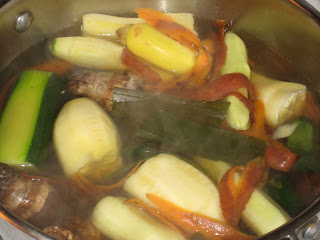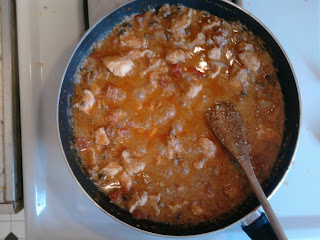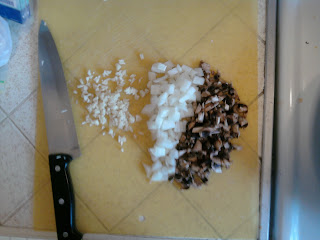
Vegetable soup is probably one of my favorite ways to actually eat vegetables, and it's great because you can pretty much put whatever you want in there and if the rest of it is okay, you'll be fine.
I've made it before with just water, and it's fine, but it's better with vegetable stock. Save up all the stuff you would normally toss - peelings, cores, stems, whatever - and then just stew it in hot water.
I feel weird even giving a recipe here, because it kind of defeats the point, but here's what I used:

- peels from two yams
- stems of 4 portobello mushrooms
- cores from 2 crookneck squash and 3 zucchini
- leaves from 3 leek stalks
You want enough water to cover at least, maybe more if you've got some really nutrient-rich stuff in there like kale or something. (N.B. - we'll cover recipes that leave you with yam peels, mushroom stems, squash cores, etc. later).
Bring to a boil; reduce to a low heat and let stew for a few hours, maybe longer. Everything should have become waterlogged, and the water should be a different color.
 Find a suitable container (I used another pot) and use a colander or strainer to filter the veggies from the water. Squeeze remaining water out of the veggies with a spoon before discarding them.
Find a suitable container (I used another pot) and use a colander or strainer to filter the veggies from the water. Squeeze remaining water out of the veggies with a spoon before discarding them. As you can see, I got an earthy brown vegetable stock. I decided to split it into two containers and refrigerate one and freeze the other. One would go to the vegetable soup, and the other to something completely different...


